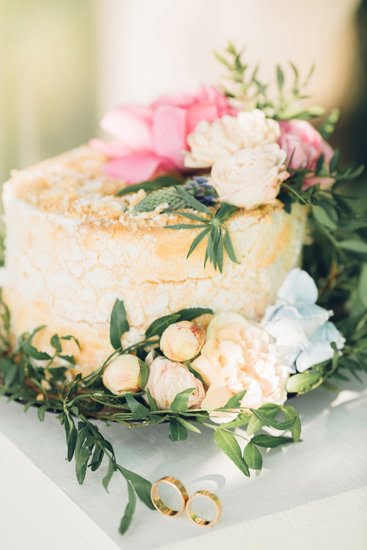Marzipan has long been a favorite among bakers and cake decorators for its versatility and ability to enhance the overall visual appeal of a cake. Its pliability allows for intricate shapes and designs, making it perfect for creating stunning decorations that can truly elevate any cake to a work of art. In this article, we will explore the art of sticking marzipan decorations to a cake, providing you with step-by-step guidance and expert tips to achieve perfect adhesion.
Marzipan is a sweet almond-based confectionery that has been used in baking for centuries. It is made by combining ground almonds with sugar or honey, resulting in a smooth, malleable paste that can be easily shaped into various forms. When used as a decoration on cakes, marzipan offers not only aesthetic appeal but also adds a delightful almond flavor.
Before diving into the process of sticking marzipan decorations to a cake, it is important to understand the basics of working with marzipan itself. Kneading, rolling, and shaping are essential steps in preparing marzipan for decoration. Additionally, proper preparation of the cake surface is crucial to ensure optimal adhesion.
To create lasting and secure attachments between marzipan decorations and your cakes, selecting the right adhesive is imperative. Different options are available based on personal preference and the specific needs of your project.
By following our step-by-step guide in this article, you will learn how to achieve flawless adhesion when applying marzipan decorations onto your cakes. We will also provide troubleshooting tips for common challenges that may arise during the process.
In addition to sticking marzipan decorations successfully, we will explore ways to decorate the rest of the cake in order to complement these beautiful adornments. Furthermore, we will share tips on maintaining and storing marzipan-decorated cakes so that they remain fresh and visually appealing over time.
Stay tuned as we embark on this exciting journey through the world of marzipan decorations, where your cakes are elevated to new heights of beauty and taste.
Understanding the Basics
Marzipan is a versatile and delicious almond-based confection that is commonly used in cake decorations. Understanding the basics of marzipan, including what it is and why it is used for cake decorations, can help elevate your cake decorating skills to the next level.
What is Marzipan?
Marzipan is a sweet and pliable mixture made primarily from ground almonds and sugar. It has a smooth texture and can be easily shaped into various decorative elements for cakes, such as flowers, figures, or even intricate designs. Marzipan has been used for centuries in European baking traditions and is often associated with festive occasions like weddings or Christmas celebrations.
Why Use Marzipan for Cake Decorations?
There are several reasons why marzipan is a popular choice for cake decorations. Firstly, marzipan has a malleable consistency, making it easy to work with and shape into intricate designs. Whether you want to create realistic-looking flowers or delicate borders, marzipan allows you to let your creativity shine.
Additionally, marzipan adds a delectable flavor to cakes. Its almond taste pairs well with many different types of cake flavors, enhancing the overall taste experience. Marzipan can also provide an additional layer of moisture to the cake, keeping it moist and fresh for longer periods.
Furthermore, using marzipan decorations can add visual appeal to your cakes. The smooth surface of marzipan provides an excellent canvas for vibrant colors and intricate detailing. Whether you choose to add a simple design or go all out with elaborate sculptures, marzipan decorations can instantly transform an ordinary cake into an impressive centerpiece.
Preparing the Marzipan for Decoration
Marzipan is a versatile ingredient that can be molded into various shapes and used to create stunning decorations for cakes. However, before you can start adorning your cake with marzipan creations, it is important to properly prepare the marzipan. This section will provide you with valuable tips on kneading, rolling, and shaping marzipan to ensure that it is ready for decoration.
Firstly, it is essential to knead the marzipan thoroughly in order to achieve a pliable and smooth texture. Start by cutting the marzipan into small pieces and then use your hands to work them together. The heat from your hands will soften the marzipan and make it easier to manipulate. Knead until there are no lumps or dry spots left in the mixture.
Once the marzipan is adequately kneaded, it can be rolled out into a thin sheet using a rolling pin. Dust your work surface with powdered sugar or cornstarch to prevent sticking. Begin in the center of the marzipan ball and roll away from you, turning the dough as needed to maintain an even thickness. Aim for a thickness of about 1/8 inch (3mm) for easy handling without compromising on structure.
When it comes to shaping marzipan decorations, you have endless possibilities. From flowers and leaves to intricate figures and designs, let your imagination run wild. To shape smaller details or figures, break off a small portion of marzipan and roll it into a ball or sausage shape. Then use your fingers or specialized tools like sculpting tools or toothpicks to sculpt and refine the shape as desired.
The Importance of a Smooth Surface
To achieve a professional and polished look for marzipan decorations on a cake, it is crucial to start with a smooth surface. A well-prepared cake will not only provide a seamless base for the marzipan, but it will also ensure better adhesion and an overall more aesthetically pleasing final result.
Before applying the marzipan, it is important to make sure that the cake layers are level and even. This can be achieved by trimming any uneven or domed tops off each layer using a serrated knife. By creating a flat surface, you will prevent any gaps or bulges from appearing once the marzipan is applied.
Once your cake is leveled, it is recommended to crumb coat it with a thin layer of frosting or buttercream. This layer not only seals in any loose crumbs, but it also acts as an adhesive for the marzipan. Spread a thin layer of frosting on the top and sides of your cake using an offset spatula, making sure to fill in any gaps or holes.
After the crumb coat has been applied, chill the cake in the refrigerator for about 15-20 minutes. This helps to firm up the frosting and create a solid base for the marzipan decorations. Once chilled, remove the cake from the fridge and apply another layer of frosting evenly to cover any imperfections or inconsistencies.
Having a smooth surface is key when working with marzipan as it allows for better adherence and prevents air bubbles or wrinkles from forming underneath. It also provides a clean canvas for your creative decorations without any distractions. By taking careful steps to prepare your cake beforehand, you are setting yourself up for success when it comes to applying marzipan decorations.
| Importance | Steps |
|---|---|
| Achieving professional look | Leveling cake layers, crumb coating, applying a final layer of frosting |
| Better adhesion | Ensuring smooth surface prevents air bubbles and wrinkles |
| Aesthetic appeal | Provides a clean canvas for marzipan decorations |
The Glue that Holds it All Together
Marzipan is a versatile and delicious ingredient used for cake decorations. However, to ensure that your marzipan decorations stay in place, it is crucial to choose the right adhesive. The adhesive you select will not only determine how well your marzipan adheres to the cake but also impact the overall appearance and taste of your creation.
One of the most commonly used adhesives for marzipan decorations is simple syrup. Made by dissolving equal amounts of sugar and water, simple syrup provides a sticky surface that helps the marzipan stick securely to the cake. To make simple syrup, combine one cup of granulated sugar with one cup of water in a small saucepan. Heat over medium heat, stirring constantly until the sugar has dissolved completely. Let the syrup cool before using it on your cake.
Another popular choice for adhesive is apricot jam or preserves. Apricot jam not only acts as a glue but also adds flavor to your cake’s overall taste profile. To use apricot jam as an adhesive, warm it in a saucepan over low heat until it becomes thin enough to spread easily. Brush a thin layer onto the surface where you want to attach the marzipan decorations, ensuring even coverage.
In addition to simple syrup and apricot jam, you can also use other types of fruit jams or jellies as adhesives for marzipan decorations. Strawberry, raspberry, or peach jams can all provide a unique twist of flavors while helping your marzipan creations adhere firmly.
Choosing the right adhesive for your marzipan decorations is crucial for achieving perfect adhesion and ensuring that they hold up throughout transportation and serving. Experiment with different options to find what works best for you in terms of both taste and functionality.
| Adhesive | Description |
|---|---|
| Simple Syrup | Made by dissolving equal amounts of sugar and water, provides a sticky surface for marzipan |
| Apricot Jam/Preserves | Acts as a glue and adds flavor to the cake; warm before using to brush onto the cake surface |
| Fruit Jams/Jellies (e.g., Strawberry, Raspberry, Peach) | Alternative options for adhesion that offer unique flavors in addition to sticking power |
Applying Marzipan Decorations
Gather Your Tools and Materials
Before you begin applying marzipan decorations to your cake, it’s important to make sure you have all the necessary tools and materials. Here are some items you will need:
- Marzipan decorations: Prepare your marzipan ahead of time by kneading, rolling, and shaping it into various designs such as flowers, leaves, or figures.
- Fondant adhesive: This is the glue that will hold your marzipan decorations in place. You can purchase ready-made fondant adhesive or make your own by mixing a small amount of water with powdered sugar until you achieve a thick consistency.
- Small paintbrush: Use a clean paintbrush with soft bristles to apply the fondant adhesive onto the back of your marzipan decorations.
- Piping bags: Fill piping bags with additional fondant adhesive for any touch-ups that may be needed during the application process.
Applying the Marzipan Decorations
Now that you have gathered all your tools and materials, it’s time to start applying the marzipan decorations onto the cake. Follow these steps for perfect adhesion:
- Start with a smooth surface: Ensure that the surface of your cake is completely smooth before applying any marzipan decorations. Any bumps or unevenness may cause the decorations to slide or not adhere properly.
- Apply a thin layer of fondant adhesive: Using a small paintbrush, lightly brush a thin layer of fondant adhesive onto the area where you want to place your marzipan decoration. Make sure to cover the whole surface evenly without applying too much pressure.
- Position and press down gently: Carefully position your marzipan decoration onto the area where you applied the fondant adhesive. Gently press down on it to ensure proper contact and adhesion.
- Smooth out any air bubbles or wrinkles: Use your fingers or a clean, dry paintbrush to smooth out any air bubbles or wrinkles that may have formed during the application process. This will help the marzipan decoration adhere more securely to the cake.
- Repeat the process: Continue applying marzipan decorations using the same technique until you have achieved the desired design. Remember to apply a thin layer of fondant adhesive and press down lightly for each decoration.
Final Touches and Tips
Once you have applied all your marzipan decorations, it’s time to add the finishing touches and make sure everything looks perfect. Here are some final tips for achieving professional results:
- Allow time for drying: Give your cake enough time to allow the fondant adhesive to dry completely before adding any additional decorations or transporting it. This will ensure that your marzipan decorations stay in place.
- Store properly: If you need to store your marzipan-decorated cake overnight or for an extended period, keep it in a cool, dry place away from direct sunlight. This will help preserve both the appearance and taste of your cake.
- Practice makes perfect: Applying marzipan decorations can be tricky at first, so don’t be discouraged if it takes a few tries to get it right. With practice and patience, you’ll soon master the art of sticking marzipan decorations onto cakes.
Remember, applying marzipan decorations is a fun and creative way to elevate any cake design. By following these step-by-step guidelines and using the right techniques, you can achieve perfect adhesion and create stunning cakes that are as beautiful as they are delicious.
Troubleshooting
Common Challenges in Sticking Marzipan Decorations
While sticking marzipan decorations to a cake may seem like a straightforward task, there can be some common challenges that arise. Being prepared for these challenges and knowing how to overcome them will ensure a successful outcome. One common challenge is the marzipan decorations sliding or falling off the cake.
This can happen if the surface of the cake is not properly prepared or if the adhesive used is not strong enough. Additionally, if the marzipan decorations are too heavy or bulky, they may have difficulty adhering to the cake.
Another challenge that may occur is air bubbles forming beneath the marzipan decorations. This can create an uneven and unattractive appearance on the cake. Air bubbles often appear when rolling out and applying the marzipan, due to trapped air being pushed against the cake’s surface. If not addressed, these air bubbles can cause the marzipan to lose adhesion and detach from the cake.
Solutions for Perfect Adhesion
To address these challenges and achieve perfect adhesion with your marzipan decorations, there are solutions you can employ. Firstly, ensure that your cake’s surface is smooth and level before applying any decorations. Crumb coat your cake with a thin layer of buttercream or ganache before covering it with fondant or marzipan. This will help create an even surface for your decorations to stick onto.
Choosing a strong adhesive is also crucial for maintaining long-lasting adherence of your marzipan decorations. While some people use royal icing or melted chocolate as adhesives, they may not provide sufficient strength for heavier or bulkier pieces. Instead, consider using edible glue specifically designed for sticking icing and fondant decorations. Edible glue has a stronger hold than other options and helps prevent sliding or falling off.
To tackle air bubbles forming beneath your marzipan decorations, take extra care when rolling out and applying the marzipan. Roll it evenly and smoothly, ensuring no air pockets are trapped during the process. If you notice any air bubbles forming on the cake after application, gently press them out using a small pin or toothpick. This will help release the trapped air and create a smooth surface for your decorations.
By addressing these common challenges and utilizing these solutions, you can achieve perfect adhesion with your marzipan decorations and create a visually stunning cake that is sure to impress.
Adding the Finishing Touches
Once you have successfully applied your marzipan decorations to the cake, it’s time to add the finishing touches by decorating the rest of the cake to complement the marzipan. This step is crucial in creating a cohesive and visually appealing design that showcases the beauty of your marzipan creations.
One way to enhance the overall look of the cake is by incorporating complementary colors and textures in your additional decorations. Consider using icing or frosting in colors that complement or contrast with the colors of your marzipan decorations. For example, if you have used pastel-colored marzipan flowers on your cake, you could use a light-colored icing as a base and accent it with piped buttercream vines or leaves for added visual interest.
Texture is another element that can elevate your cake design. You can create texture by using different piping techniques, such as ruffles, rosettes, or basketweave patterns. These textured details can be added around and between your marzipan decorations to provide depth and visual appeal.
In addition to icing and piped details, consider incorporating other decorative elements such as edible pearls, sprinkles, or even fresh flowers that coordinate with the color palette of your marzipan decorations. These small embellishments can add an extra layer of sophistication and glamour to your cake design.
By paying attention to these finishing touches and considering how they interact with your marzipan decorations, you can create a stunning masterpiece that will impress both visually and in taste. Remember that balance is key – ensure that the additional decorations do not overwhelm or detract from the focal point of your marzipan creations. With careful planning and execution, you can achieve a beautifully decorated cake that showcases not only your marzipan skills but also your artistic abilities as a decorator.
Maintaining and Storing Marzipan Decorated Cakes
Once you have successfully applied marzipan decorations to your cake, it is important to know how to properly maintain and store the finished product to ensure its longevity and preserve its beauty. With the right techniques, you can enjoy your marzipan decorated cake for days or even weeks after it has been made.
To begin with, it is crucial to handle the marzipan decorated cake with care. Avoid touching the decorations directly as much as possible, as this can leave fingerprints or smudges on the surface. Instead, use a clean knife or spatula to cut slices from the cake.
When storing a marzipan decorated cake, it is best to keep it in a cool and dry place. Extreme temperatures can cause the marzipan to become soft or melt, while moisture can make it sticky and lose its shape. If you live in a particularly humid environment, consider placing the cake in an airtight container or wrapping it tightly with plastic wrap before storing.
Additionally, be mindful of what you place on top of or near the marzipan decorations when storing the cake. Heavy objects or other foods with strong odors can potentially damage or absorb into the marzipan, affecting both its appearance and taste. To protect the decorations, create a barrier between them and any surrounding items by using parchment paper or cardboard dividers.
Lastly, if you have leftovers of your marzipan decorated cake that you wish to save for later consumption, proper storage is key. It is recommended to refrigerate any leftovers in an airtight container to maintain freshness and prevent spoilage. However, keep in mind that refrigeration may cause condensation on the surface of the marzipan decorations when removing from cold storage. To avoid this issue, allow the cake to come up to room temperature before serving.
By following these tips for maintaining and storing marzipan decorated cakes, you can keep your creations looking beautiful and delicious for as long as possible. With proper care, your marzipan decorations will stay intact and continue to elevate the beauty of your cake long after it has been made.
Conclusion
In conclusion, using marzipan decorations is a wonderful way to elevate the beauty of your cake and impress your guests. By understanding the basics of marzipan and how to prepare it for decoration, you can create stunning shapes and designs that will wow everyone who sees them. The key to successfully sticking marzipan decorations lies in ensuring a smooth surface on the cake and choosing the right adhesive.
Taking the time to properly prepare the marzipan by kneading, rolling, and shaping it will ensure that it is pliable and easy to work with. This will make applying it to your cake a breeze. Additionally, making sure that the surface of the cake is smooth before adding the marzipan will help to create a seamless look.
Choosing the right adhesive for marzipan is crucial for achieving perfect adhesion. While some decorators prefer traditional methods such as using royal icing or edible glue, others may opt for more modern alternatives such as melted chocolate or apricot jam. Whichever method you choose, be sure to apply it sparingly so as not to overpower or dampen the flavors of the marzipan.
Frequently Asked Questions
What can I use to stick marzipan to cake?
Marzipan is typically used to cover and decorate cakes, creating a smooth and delicious outer layer. To stick marzipan onto a cake, you can use different types of binders such as buttercream frosting or apricot jam.
By spreading a thin layer of either option onto the cake surface, it creates a sticky base for the marzipan to adhere to. This not only helps in keeping the marzipan in place but also adds an extra layer of flavor between the marzipan and cake.
What do you stick marzipan with?
When working with marzipan, you can use various substances to help it adhere to a cake. One common method is using buttercream frosting as a binder. By spreading a thin layer of buttercream frosting on top of the cake, it provides a moist and sticky surface for the marzipan to stick to.
Alternatively, some people prefer using apricot jam as a binder for marzipan. The natural stickiness and slight tartness of the jam work well in helping the marzipan adhere firmly to the cake.
Can you use any jam to stick marzipan on cake?
While there are many jams available, not all jams are suitable for sticking marzipan on a cake. However, one commonly used jam for this purpose is apricot jam. Its naturally sticky texture makes it an ideal choice when working with marzipan as it helps secure the marzipan onto the cake’s surface effectively.
The slight tanginess of apricot jam also complements the sweetness of both marzipan and cake, enhancing their overall flavors when consumed together. It’s important to choose a smooth and seedless variety of apricot jam for best results when using it as an adhesive for marzipan on cakes

Welcome to our cake decorating blog! My name is Destiny Flores, and I am the proud owner of a cake decorating business named Cake Karma. Our mission is to provide delicious, beautiful cakes for all occasions. We specialize in creating custom cakes that are tailored specifically to each customer’s individual needs and tastes.





